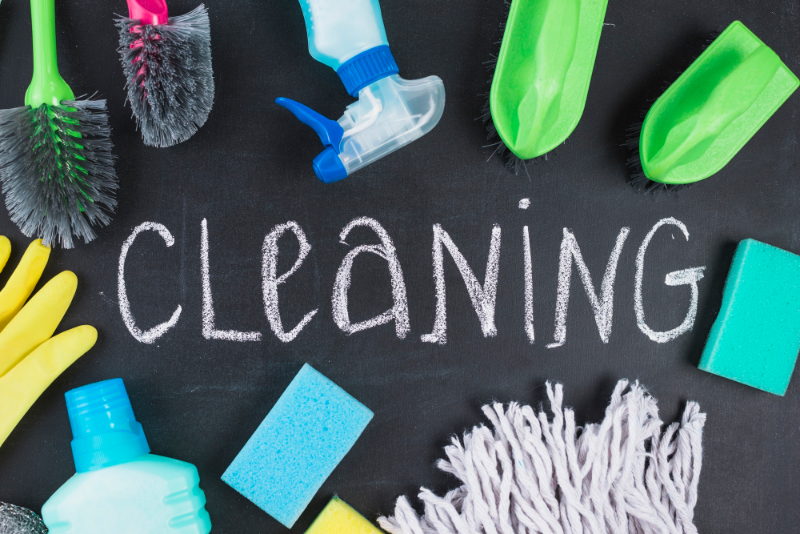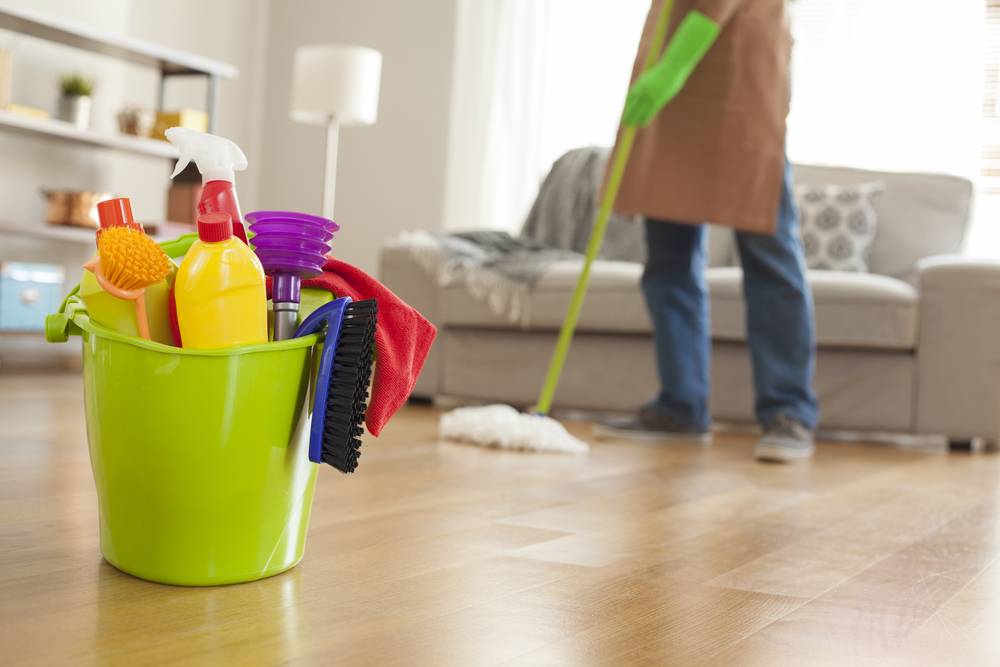Recognizing the Need for Extensively Disinfecting and Sterilizing Often Touched Surfaces in High-Traffic Areas
In the world of public health and safety, the meticulous disinfection and sanitization of regularly touched surface areas in high-traffic locations stand as extremely important actions in avoiding the spread of hazardous microorganisms. By checking out the various facets of surface area sanitation, from the threats linked with neglecting cleaning methods to the effective techniques that can be utilized, a clearer understanding arises of the crucial duty these techniques play in guarding public wellness.
Value of Surface Disinfection
Emphasizing the thorough sanitation of high-traffic surfaces is crucial in maintaining a sanitary atmosphere and preventing the spread of harmful microorganisms. High-touch surface areas such as door deals with, light switches, lift buttons, and counter tops act as breeding premises for viruses and germs. Regular disinfection of these surface areas is essential to reduce the danger of contamination and transmission of ailments.
By applying a durable disinfection protocol, organizations and companies can develop a safer atmosphere for workers, consumers, and visitors. Proper surface area sanitation not only reduces the spread of contagious diseases but likewise infuses self-confidence in the cleanliness and security of the premises. This positive technique shows a dedication to health and wellness and health, which is specifically important in high-traffic areas where the possibility of direct exposure to virus is enhanced.
Furthermore, surface disinfection plays a crucial role in overall infection control strategies. Combined with hand health methods, putting on masks, and keeping physical distancing, detailed sanitation of high-touch surface areas creates a thorough protection versus the transmission of damaging microbes. Focusing on surface area sanitation is a necessary element of an alternative technique to wellness and security in shared rooms.
Risks of Ignoring Cleaning Practices
Ignoring detailed sanitation of high-traffic surface areas substantially heightens the danger of viral and bacterial contamination, posing a significant danger to the wellness and security of individuals often visiting these rooms. Failure to implement correct cleansing methods can lead to the build-up and spread of dangerous microorganisms, including microorganisms and viruses, on frequently touched surface areas such as doorknobs, handrails, lift buttons, and countertops.

Additionally, ignoring the importance of detailed cleaning not just compromises the well-being of people however also weakens efforts to keep a tidy and sanitary setting. It is critical to acknowledge the value of appropriate sanitation methods in stopping the spread of infections and protecting public wellness.
Effective Sanitation Methods
To keep ideal sanitation and decrease the threat of contamination on high-traffic surface areas, employing efficient sanitation techniques is crucial. Among the most usual and efficient disinfection methods is making use of chemical disinfectants. These items can differ in strength and make-up, with some targeting certain virus like infections or microorganisms. It is critical to comply with the maker's guidelines for proper dilution, get in touch with time, and ventilation when using chemical disinfectants to ensure their effectiveness - Scrub the Surfaces.
An additional effective method is making use of UV-C light. UV-C light has been revealed to be reliable in killing a vast array of microbes by disrupting their DNA structure, therefore preventing them from reproducing. It is crucial to use UV-C light correctly, making certain that the right strength and direct exposure time are applied to attain the desired disinfection outcomes.
Furthermore, employing vapor cleaning as a disinfection method can be highly reliable, specifically on surfaces that are heat-resistant. Heavy steam can penetrate permeable surface areas and eliminate bacteria, infections, and other microorganisms efficiently. When making use of heavy steam cleansing, it is very important to ensure that the surface gets to the required temperature level for a sufficient amount of time to assure proper sanitation.
Influence On Public Health And Wellness
The upkeep of high requirements of tidiness and disinfection on high-traffic surfaces plays a crucial function in guarding public health. Often touched surface areas in areas with high step, such as doorknobs, hand rails, lift buttons, and restroom facilities, work as reproducing premises for damaging microorganisms. Falling short to sufficiently decontaminate these surfaces can result in the fast spread of contagious conditions within neighborhoods. By applying comprehensive disinfection methods, the risk of transmission of viruses, germs, and various other germs can be significantly decreased.
Effective hygiene practices not only protect useful content people from dropping unwell but likewise contribute to the overall well-being of culture. Public wellness authorities emphasize the significance of maintaining clean settings to stop episodes and consist of the spread of ailments. In high-traffic locations like flight terminals, schools, medical facilities, and public transport systems, the impact of strenuous sanitation steps can not be understated. Focusing on the sanitization of frequently touched surfaces is a proactive strategy to advertising public health and enhancing the safety and security of people in shared rooms.
Implementing Normal Cleaning Up Protocols
Immediately setting up and adhering to a consistent timetable of cleaning procedures is paramount for maintaining the sanitation and security of high-traffic surface areas. Routine cleansing protocols are crucial in stopping the buildup of bacteria and virus on frequently touched surface areas, specifically in areas with high foot website traffic. By executing a methodical approach to cleaning, organizations can properly decrease the danger of condition transmission and create a healthier setting for employees, clients, and the general public.
To develop an effective cleansing routine, it is critical to identify high-traffic areas that need regular interest. These areas may consist of doorknobs, handrails, elevator switches, bathroom centers, and common equipment. Carrying out a regular cleansing routine that targets these surfaces multiple times a day can substantially lower the spread of navigate to this site harmful bacteria and viruses.
In addition, utilizing appropriate cleaner and disinfectants is crucial to making certain that surface areas are completely sterilized. Normal training of cleaning up personnel on appropriate cleaning methods and the value of adherence to the cleansing timetable is additionally essential in keeping a sanitary setting. By focusing on constant cleansing procedures, organizations can promote the health and well-being of individuals who interact with these high-traffic surface areas.

Conclusion
In conclusion, it is essential to prioritize detailed sanitation and sanitization of often touched surfaces in high-traffic areas to protect against the spread of unsafe virus and keep public wellness. It is critical to identify the importance of maintaining tidy surface areas in high-traffic locations to make sure the well-being of the area.
In the realm of public wellness and safety and security, the precise sanitation and sanitization of often touched surfaces in high-traffic locations stand as critical measures in preventing the spread of unsafe microorganisms. By discovering the different aspects of surface sanitation, from the dangers linked with neglecting cleansing protocols to the reliable methods that can be used, a clearer understanding arises of the vital function these methods play in protecting public wellness.Additionally, using steam cleaning as a sanitation technique can be very reliable, especially on surface areas that are heat-resistant. When making use of steam cleaning, it is vital to guarantee that the surface area gets to the required temperature level for a sufficient amount of time to ensure correct sanitation.
In conclusion, it is critical to prioritize thorough sanitation and sanitization of have a peek at this website regularly touched surface areas in high-traffic areas to avoid the spread of unsafe pathogens and maintain public health and wellness.